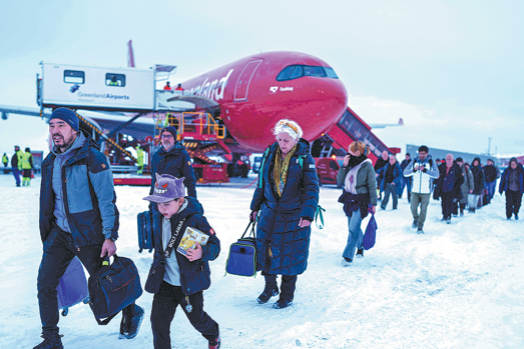Region must make most of what it has
By Li Yang | China Daily | Updated: 2021-06-12 08:55
Blue skies, brisk air, fairytale snow-covered world in winter and locals' warm hospitality all-the-year-round are still fresh in my mind, though it has been a while since my college days in Qiqihar city of Heilongjiang province during the first four years of the century.
Located at the center of one of the world's largest black soil belts with lush wetland stretching till as far as the eye can see, the city boasts not only of ideal natural conditions to develop modern agriculture and tourism, but also tremendous industrial legacies from the planned economy era, plus developed road and railway networks.
However, while the market economy has spelt the end of the planned economy, it also seems to portend the end of the good old days of the large-scale State-owned enterprises in the city.
With its private economy still underdeveloped, the decline of the SOEs means the city is losing its major job creator and economic growth driver.
To some extent, Qiqihar epitomizes the dilemma confronting many other major cities in Northeast China, such as Harbin, Changchun, Shenyang and Dalian. Statistics show that over the past decade, the population of the region has dropped from more than 110 million to 98 million.
But Northeast China should stop lamenting what it has lost and think of what it can do to make the most of what it has.
As the country attaches greater significance to innovation-driven growth and high-quality development featuring harmony between humans and nature and low emissions, Northeast China has every reason to make painstaking efforts to improve its governance efficiency, business environment and protect its environment and black soil.
Given the region's huge contribution to the nation's economy over the last century, on the one hand, the central authorities can consider providing more funds to help ease the region's pressure of taking care of its elderly population. The region, which once had the highest urbanization rate thanks to its earlier State-owned economy, is fast entering an aging society development phase.
On the other hand, it is to be hoped that the region can take full advantage of the large number of institutes, labs and universities to breathe life into the underperforming State-owned enterprises by boosting their research and development and industrial upgrading.
In the future, if all goes well, modern agriculture, tourism, science and technology research, higher education and logistics will become new growth drivers for the region, once again making the region Northeast Asia's economic hub.
That said, as long as the region knows the right direction for its development and does all it can in that direction, it should not worry about the temporary shrinking of its gross domestic product, and the drop in its population.
These are just growth pangs.
























